NEWS
28.07.2022
Can Humanity Surpass Dr. Gero? Achieving Eternal Life By Uploading Your Own Consciousness

"I see you've mechanized yourself as well."
"Yes. I wanted eternal life"
The above is a quote from the evil scientist Dr. Gero, the one responsible for giving rise to Dragon Ball's iconic Android/Cell arc and who even went so far as to pursue eternal life by turning himself into an Android—Android 20 to be exact—with the sole purpose of defeating Goku.
While our technology might not quite match that found in the world of Dragon Ball, the science and technology that does exist in the real world has led to some remarkable developments in its own right. Does that mean it could one day be possible to turn ourselves into androids—or more accurately cyborgs—in order to become immortal?
We posed this question to Assoc. Prof. Masataka Watanabe, an expert in neuroscience who investigates the neural mechanism of consciousness at The University of Tokyo, to find out if it's possible to upload one's own consciousness into a machine, thereby becoming immortal.
Is it possible for humanity to surpass what Dr. Gero achieved? Watanabe told us what the latest research has to say on the matter.
Profile
Interviewee: Masataka Watanabe
Associate professor at The University of Tokyo's Graduate School of Engineering. Born in Chiba Prefecture, Japan in 1970. Graduated from the University of Tokyo's Faculty of Engineering in 1993 and completed his doctorate at the University of Tokyo's Graduate School of Engineering in 1998. Served as Assistant at the same department from 2000-2001, then became Associate Professor from 2001 onwards. Came to hold his present position and work as a visiting researcher at the Max Planck Institute for Biological Cybernetics. Author of "No no Ishiki, Kikai no Ishiki" (published by Chuokoron-Shinsha), which had an extended version translated into English and released in May, 2022 under the title "From Biological to Artificial Consciousness: Neuroscientific Insights and Progress (Springer)".
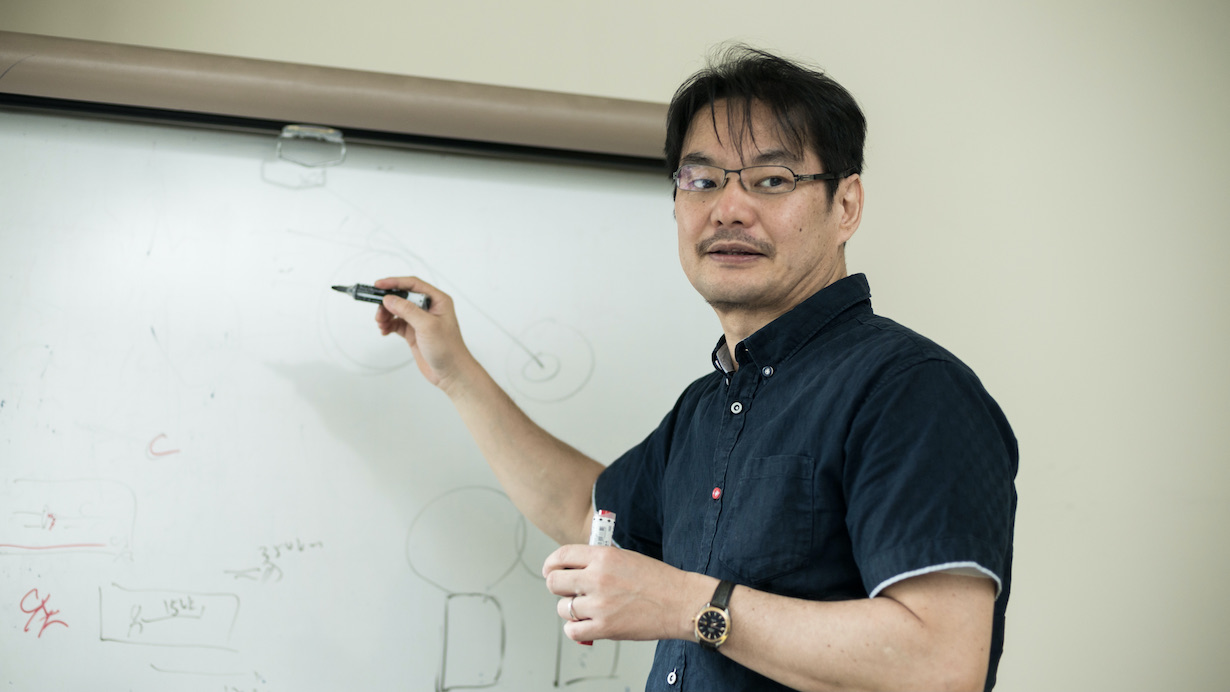
Interviewer: Shinsuke Tada
Freelance writer born in 1983 and the youngest of four siblings. Grew up watching the Dragon Ball anime every week without fail for as long as he can remember thanks to his older brother. Favorite bad guys are the Saibaimen.
Table of Contents
--What exactly does uploading your consciousness to a machine entail?
Watanabe: It's a technology that transplants human consciousness, including all of our memories, emotions, and so on, onto a machine, which will allow us to continue on living even after our bodies and brains are deceased. Before we talk about Dr. Gero specifically, I'd like to explain the theory behind this concept.
What pops into your mind when you hear the word "consciousness"? Many people might say, "I'm conscious of such-and-such," when they draw attention to something they're aware of, but the scientific meaning of the word is a little different.
To explain "consciousness" in layman's terms, let's liken it to the sensation of "sight". What is the difference between a human brain and a modern digital camera?
A human brain and a digital camera can both detect faces and drive lenses to focus on them. In this sense, they both serve the exact same function. However, when the human brain is functioning, it is accompanied by the subjective experience of vision.
In more technical terms, when the brain processes information, it does so in accordance with subjective experience. Don't forget, the brain is simply a physical organ and it is nothing more than a series of electrical circuits. But for sure, it possesses a "first person" perspective. This first-person perspective, in other words, the subjective experience that arises in our brains is our definition of consciousness.
For example, electrical circuits in radio do not give rise to subjectivity. Thus, a radio cannot possibly possess the sensation of "being a radio." Similarly, if we were to take out a human brain from the skull, slice it and observe it through a microscope, we would realize that it is nothing more than an electric circuit. In that sense, the brain's possession of subjective experience seems equally unlikely.
But interestingly, we, as human beings, know for certain that subjective experiences arise from the electric circuits in our brain. Looking at scenery, hearing sounds, recalling something, or even just thinking, are all subjective experiences that occur in conjunction with neural processing.
--By producing the subjective experience of vision, the brain brings about subjectivity... No matter how much I try to wrap my head around what you're saying, I can't seem to understand it.
Watanabe: That's only natural. Even among those of us who specialize in neuroscience, it takes time to grasp these concepts. To help you understand, I would like to introduce an optical illusion coined binocular rivalry.
Binocular rivalry refers to how our two eyes rival one another to take grasp of our field of vision. If we show two completely different patterns to each eye simultaneously, in this case, a vertical stripe pattern to the left eye and a horizontal pattern to the right eye, it will trigger our two retinas to rival each other for dominance of our conscious vision.
If you manage to input the two different patterns into your two eyes, you will experience this illusion; sometimes you will see the vertical pattern, and other times you will see the horizontal pattern.
Let's try it for ourselves. Did you notice that every few seconds, your visual subjective experience switches between the vertical and horizontal patterns?
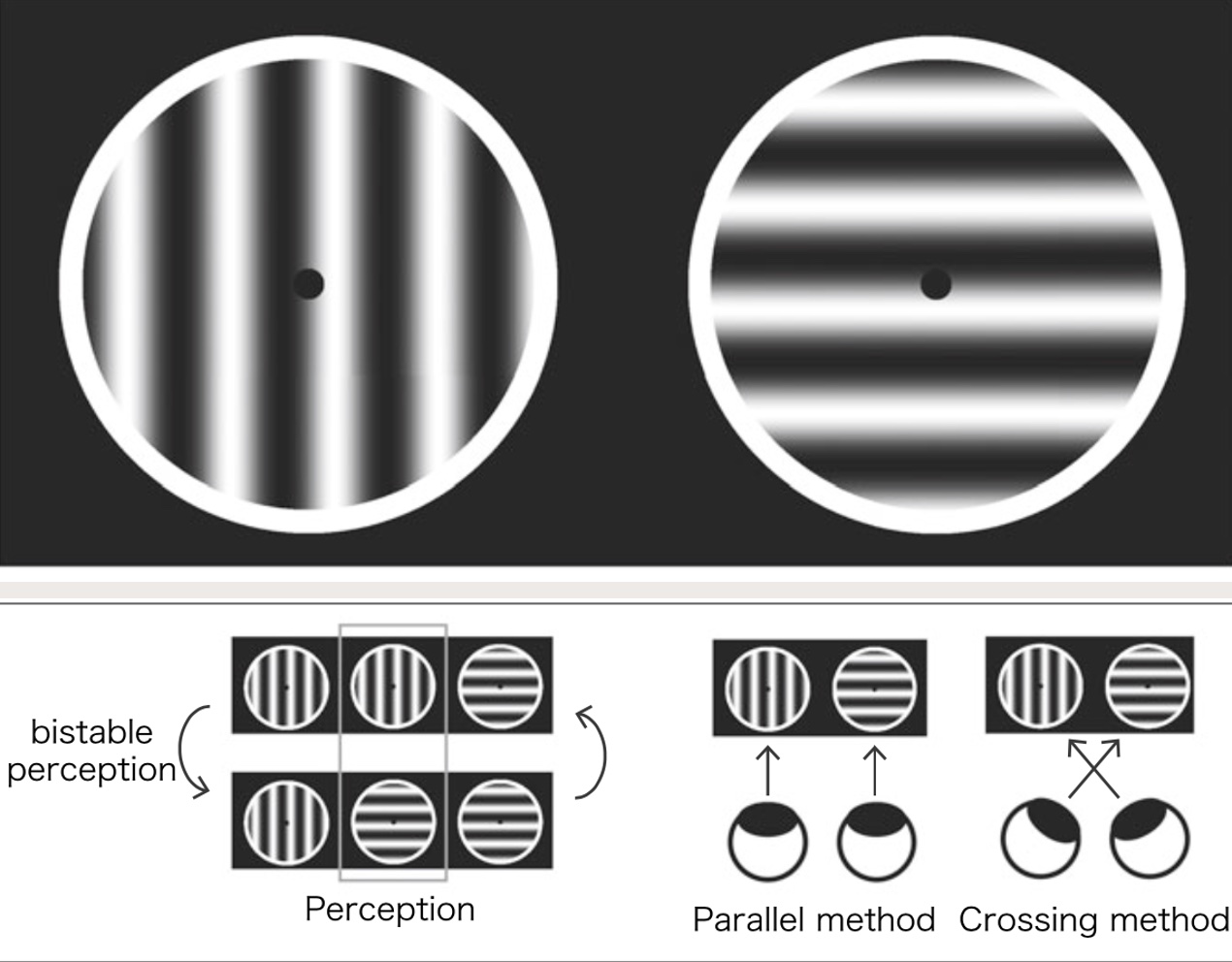
Binocular Rivalry (reprinted from "From Biological to Artificial Consciousness" Springer, Illustrator: Tomoko Yogi)
--You're right! Both stimuli (*1) are input to my eyes for sure, but the pattern that I see keeps switching.
Watanabe: Exactly. The subjective experience of vision means simply “seeing”. When two different stimuli are input into our eyes, only one will accompany subjective experience at a given moment. According to experiments conducted by my scientific mentor, Nikos Logothetis, where monkeys reported which image they are perceiving while their neural activity was recorded, it turns out that both of the images, regardless of whether they entered conscious vision, are neurally processed in the cortical visual system.
From this, we may conclude that what's being processed in our brains and the accompanying subjective experience are two different things.
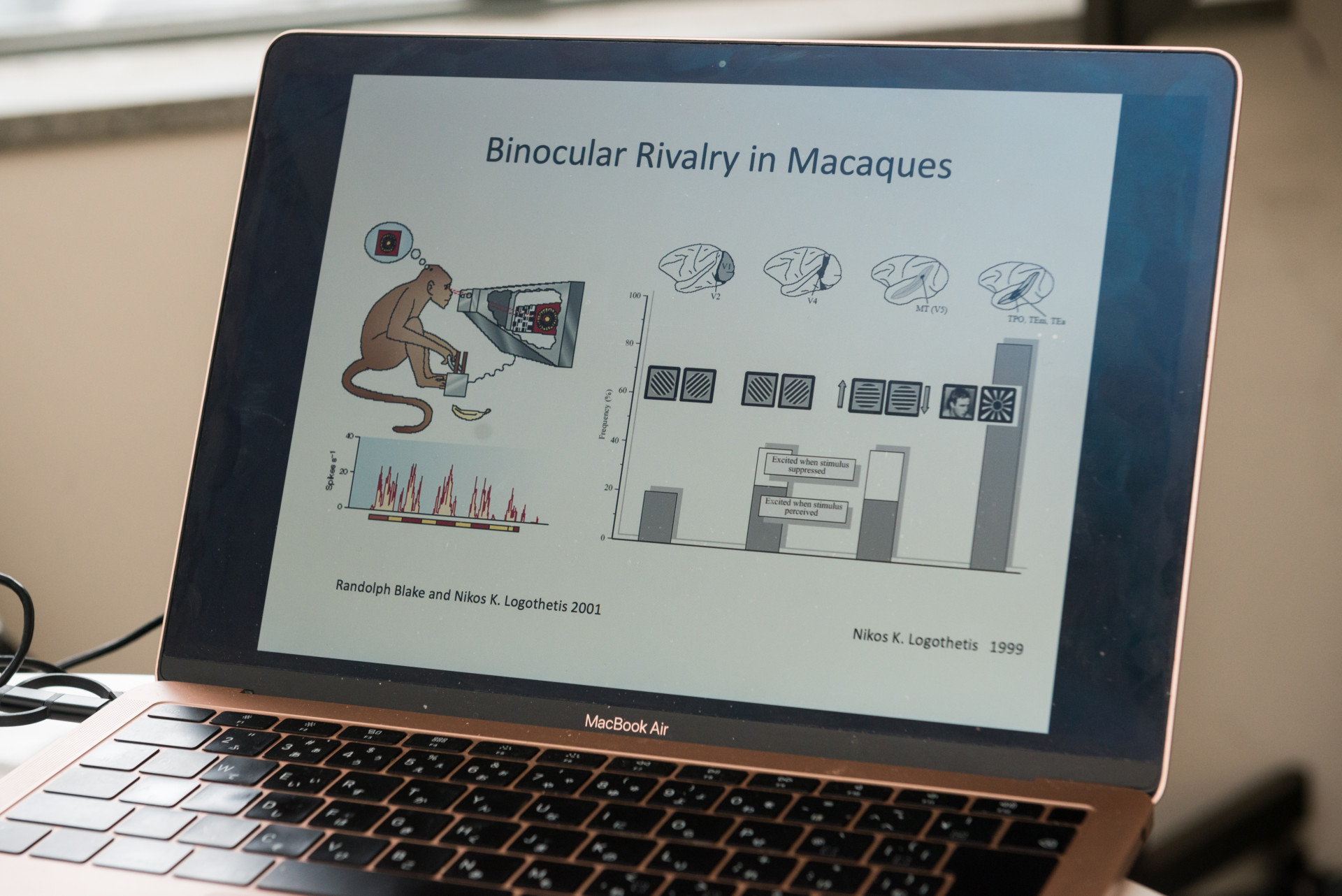
Binocular rivalry experiment conducted on monkeys
--Is it possible for this "consciousness" you've explained to reside in a machine?
Watanabe: The answer is yes. The brain is nothing more than an electrical circuit. Hence, the majority of scientists take the position that if we manage to reproduce the characteristics of those electrical circuits sufficiently, consciousness should reside in the machine.
In order to push consciousness science forward, I believe that it is necessary to approach the problem by way of “analysis by synthesis”, which is to say, through the development of machine consciousness. The key to this approach would be a test for machine consciousness.
Are you familiar with the concept of a "philosophical zombie"? It is a being that looks just like us and behaves just like us; the only thing it lacks is consciousness. Due to the hypothetical existence of such beings, we cannot test whether consciousness resides in a machine by mere external observation. In other words, we cannot test machine consciousness "objectively".
Thus, I've arrived at the conclusion that the only way to test machine consciousness is to make use of our own “subjectivity”, or in other words, connect the machine to our brains and “see” for ourselves whether consciousness has resided in the machine.
--So you'd connect your brain to a machine. Does that mean you would integrate yourself with the machine?
Watanabe: Yes, that's right.
The key to the test I've proposed is the fact that our two brain hemispheres independently possess consciousness, as a primary-primary construct. Roger Sperry, who won the Nobel Prize in Physiology or Medicine, pointed this out in his famous split-brain experiment. In terms of vision, the left hemisphere gives rise to consciousness on the right side of the field of vision, and the right hemisphere gives rise to consciousness on the left side of the field of vision, which somehow is combined to form our unified field of vision.
Then, what would happen if we took one of our hemispheres and replaced it with a mechanical hemisphere? If we, who reside in the remaining brain hemisphere, experience bilateral fields of vision, including the side processed by the mechanical hemisphere, then we would need to conclude, due to the primary-primary constraint, that consciousness has emerged in the mechanical hemisphere and integrated with our own stream of consciousness.
Coming this far, if we then manage to transfer our memories to the machine hemisphere, we would have successfully uploaded our consciousness into the machine. The good thing is that the whole process is completely seamless. We would not need to die first and have our brains extracted from our skulls.
--That would be like science fiction becoming reality.
Watanabe: However, if we do not have the means to carry out these experiments, then it will be nothing more than a thought experiment, destined to remain a fantasy forever. I truly wish to conduct these experiments while I still have the chance. Of course, we’ll need to first experiment on lab animals, but in the end, I intend to try it on myself.
As things currently stand, an important factor to this approach is developing a device called the BMI (Brain Machine Interface) (*2) that realizes connecting our brain with the machine hemisphere. Through this new type of BMI that I’ve proposed in the English version of my book “From Biological to Artificial Consciousness”, we will be able to fully reproduce both the quality and quantity of the nerve fibers that integrates our two brain hemispheres. I'm hoping this will be achievable within the next 20 years.
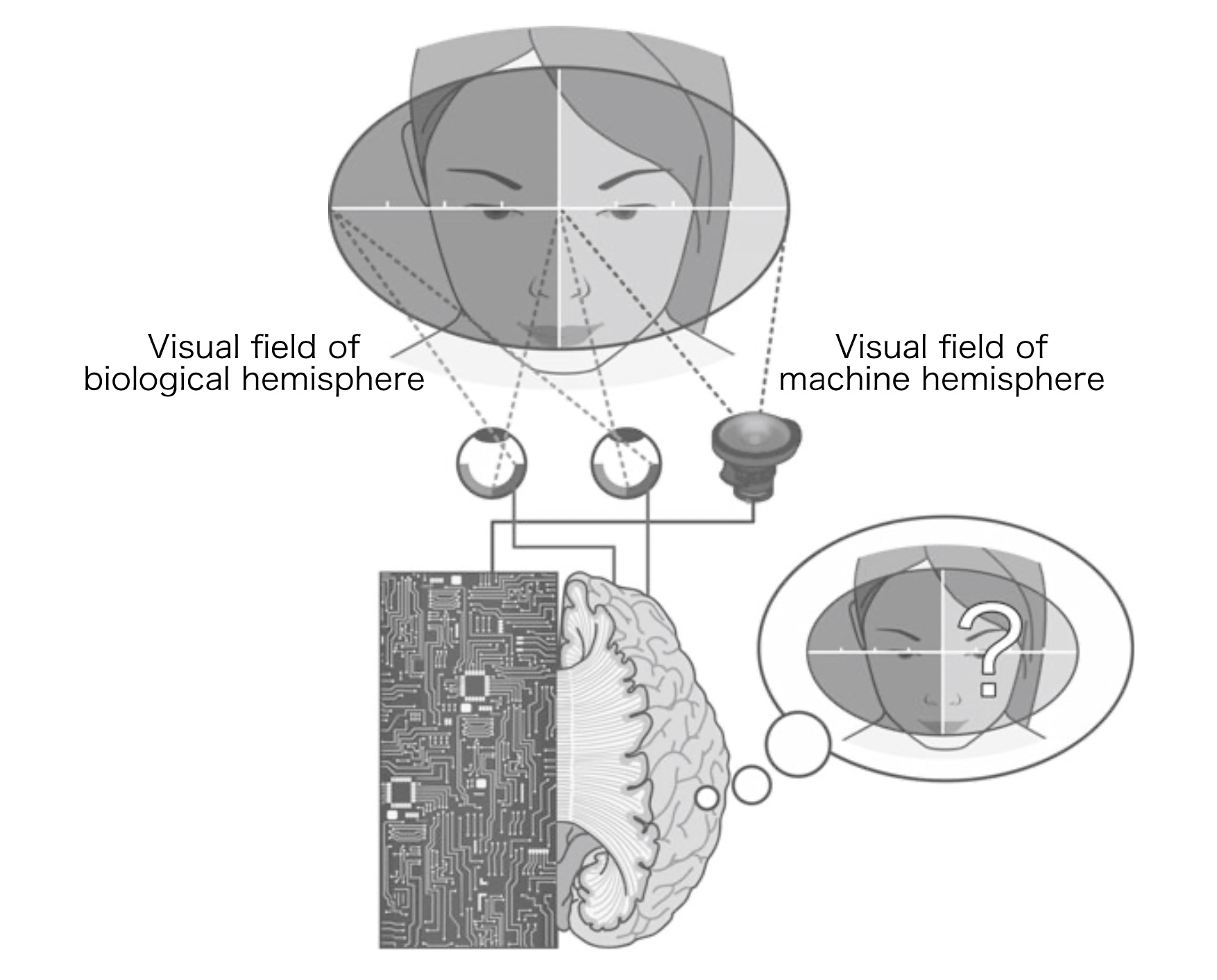
Test for Machine Consciousness (reprinted from "From Biological to Artificial Consciousness" Springer, Illustrator: Tomoko Yogi)
(*1) Represents the visible light that enters the eye (light visible to humans).
(*2) The technology and machinery (interface) that reads activity and information from the brain and also write information to the brain to convey such senses of sight or taste, bypassing all sensory organs
--The technological orientation is different from what we see in Dragon Ball, but if what you're saying can be accomplished, it would be possible to achieve the same kind of immortality Dr. Gero sought after, right?
Watanabe: We wouldn't be able to become immortal with our original biological body as he did, but I believe that mechanizing the brain would result in making eternal life a reality.
I have researched the same theoretical method Dr. Gero used to make his actual body immortal. However, in the real world, changing the construction of the human body in order to attain an ever-lasting life span would be extremely difficult with our current technology.
--After mechanizing the brain, what kind of sensations would one gain?
Watanabe: First, regarding your brain's digital space, you could effectively live in a virtual reality world where you could do whatever you wanted to your heart's content as determined by a supercomputer performing calculations. That means you could live in exactly the same way as you do in this world, or you could ask for your ideal world.
On the other hand, if you wanted to return to the real world, you could live a life in real society by connecting an avatar to the supercomputer.
In my case, if I uploaded myself to a computer, I think I'd like to travel to deep space. I would put myself in a small box, or more precisely, turn myself into a small box, and go far into space without the need for artificial hibernation or cold sleep, using just a minimal amount of energy.
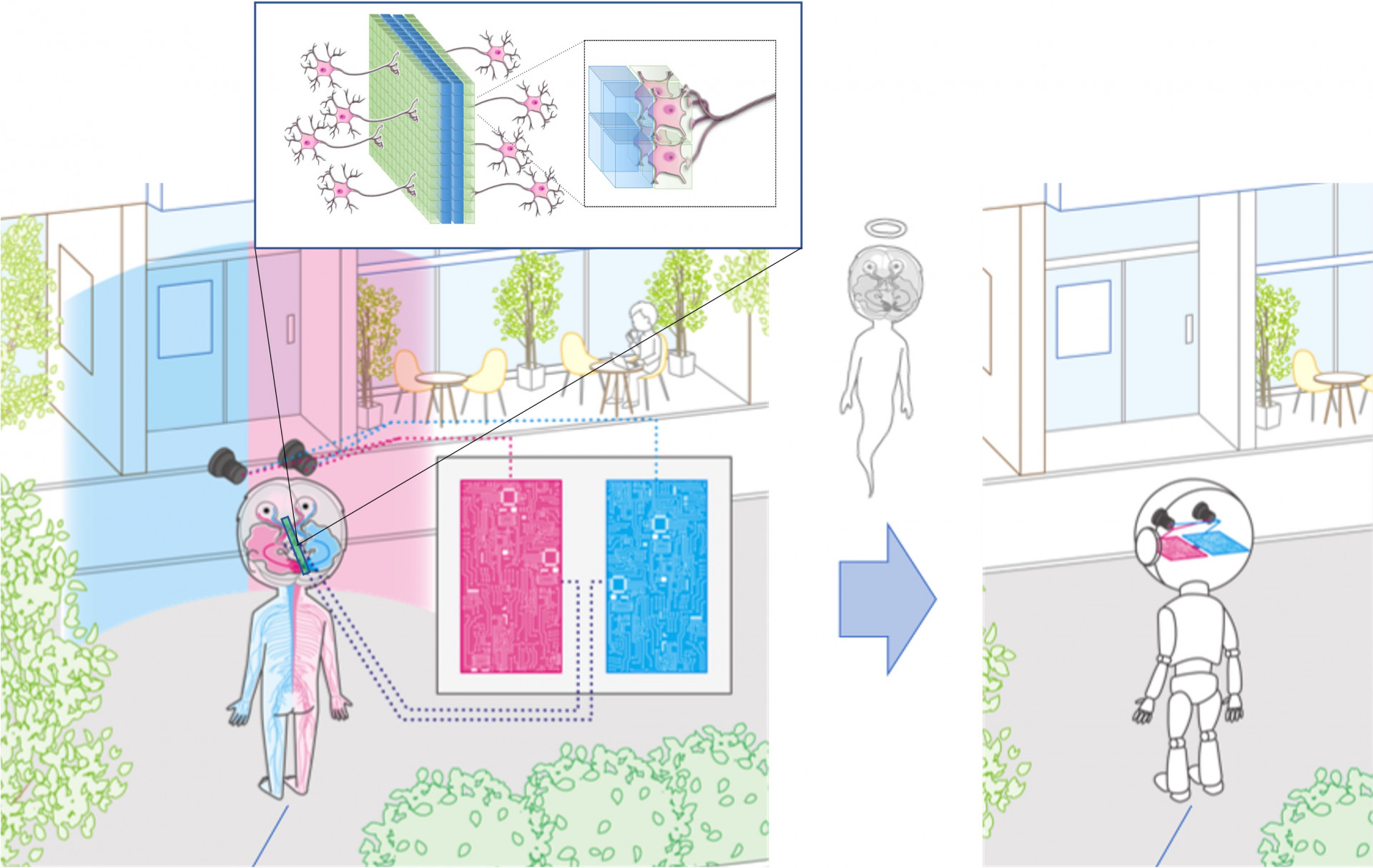
Mind-Uploading and the Proposed BMI (reprinted from "From Biological to Artificial Consciousness" Springer, Illustrator: Tomoko Yogi)
--Dr. Gero created a total of 20 Androids. Among them, 16 and 19 were entirely artificial. Do you believe they also possessed consciousness?
Watanabe: It is entirely feasible that they possessed consciousness.
Going back to the "philosophical zombie" premise we discussed earlier, Androids 16, 19 and others show fear during their battles. However, that alone does not mean we can declare that they both possess consciousness.
They may have been programmed to display fear-like emotions or they may have learned to mimic them. Likewise, No.8 (Hatchan), the first Android that appears in the series when Goku is still young, is very kind, but that too isn't enough to declare that he possesses consciousness.

--Dr. Gero ultimately meets his end at the hands of two Androids he created: 17 and 18. His attempt to download their consciousnesses into the machines he created didn't go according to plan. What do you think about this failure?
Watanabe: As a real-world problem, there are many reasons why downloading one's consciousness into a machine might not go according to plan. Placing human consciousness into a machine requires mimicking the human brain, but even the slightest mistake could certainly cause an evil consciousness to find its way inside.
In the science fiction works of author Isaac Asimov, he writes that in order to create a safe robot, they must follow the "Three Laws of Robotics" (*3). I think the same rules must be followed when placing consciousness into machines as well. Even in the real world, we've witnessed various unforeseen consequences. For example, a chatbot created via deep machine learning will say and do things it wasn't intended to.
--Is it possible to create Androids by transplanting the human brain into a mechanized body like in Dragon Ball?
Watanabe: If we used the in-development BMI device that I mentioned earlier, it may indeed be possible to create artificial humans, or cyborgs, some day. If we can advance to that point where uploading consciousness to a machine is a reality, then transplanting a brain should also be within our capability. However, since the brain is a part of the human body, there is still the concern that it will still have a limited life span.
--As a scientist in the same field as Dr. Gero, what are your thoughts on this man who subjected himself to his own experiments by remodeling his body in order to obtain eternal life?
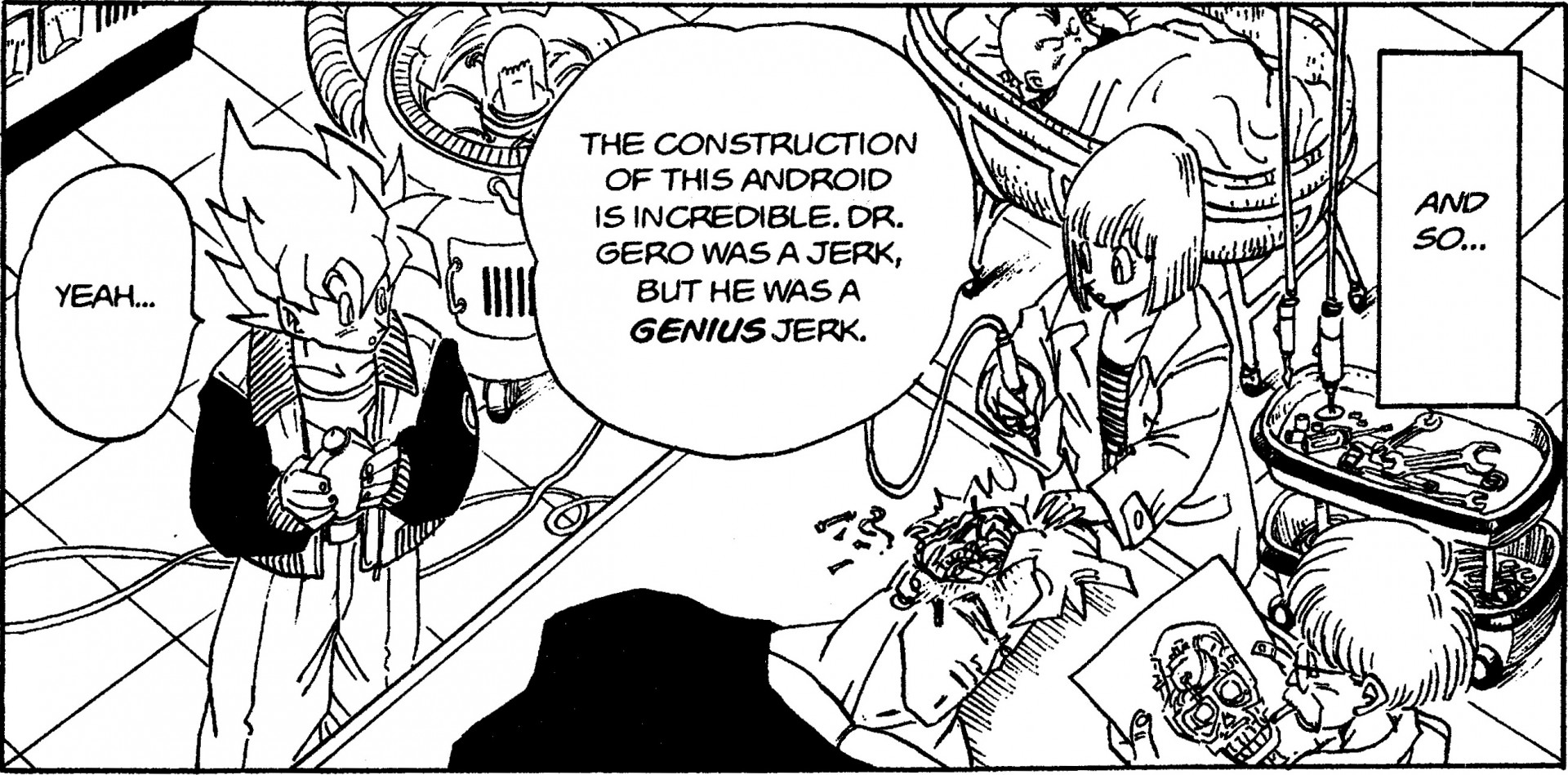
Watanabe: Setting Dr. Gero's actual objectives aside, as a scientist, I think I admire that he took on the risk of modifying his own body and was successful in the process.
In the world of Dragon Ball, Goku and all the other Z Fighters emerge victorious over many powerful foes, becoming stronger as they do so, however Dr. Gero was able to create the ultimate bio-Android, Cell, using only the computer that he himself created.
As a scientist, he was able to give rise to increasingly powerful enemies in the Dragon Ball world, so you could say he's one of the biggest contributors to the story. Of course, I can't agree with his evil ambitions (laughs).
(*3) First Law
A robot may not injure a human being or, through inaction, allow a human being to come to harm.
Second Law
A robot must obey the orders given it by human beings except where such orders would conflict with the First Law.
Third Law
A robot must protect its own existence as long as such protection does not conflict with the First or Second Law.
Photography: Daisuke Saito
This site includes machine-translated texts. Please be aware that you might find some unusual expressions that are difficult to understand.
Post
Confirm Post
Post the above comment?
Reply
Confirm Reply
Post the above comment?
Are you sure you want to delete this comment?
Report successful
Post Unsuccessful
This user will be muted.
You will be unable to see comments from muted users in the comments area.
*To unmute users, navigate to the "Comments" area on MY PAGE.
Reply
Confirm Reply
Post the above comment?
Edit
Post


Post
Confirm Post
Post the above comment?
Edit
Post